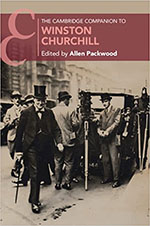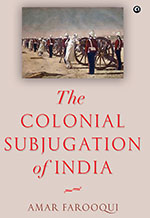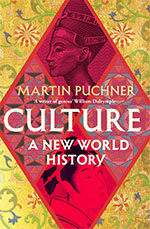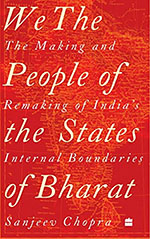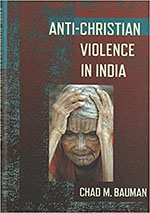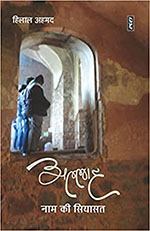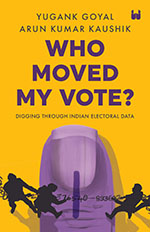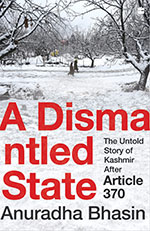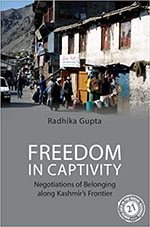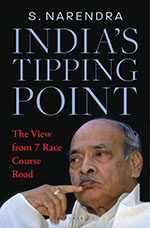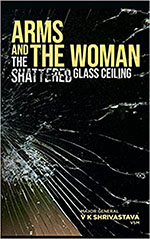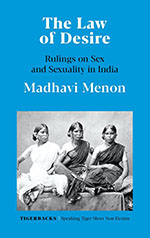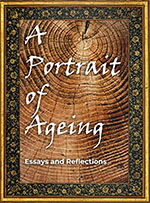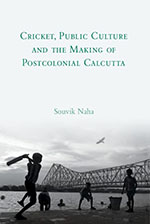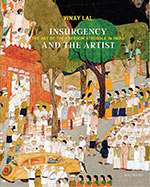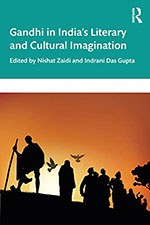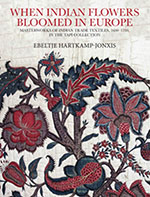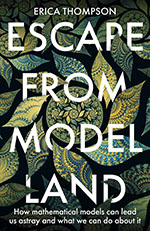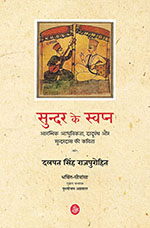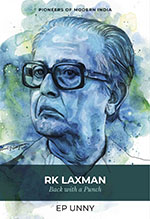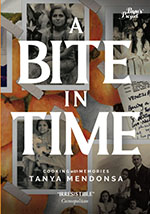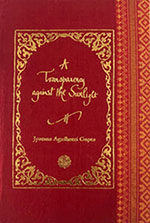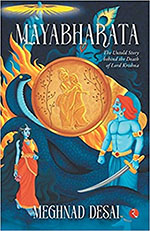Professor Krishna Mohan Shrimali is amongst the handful of scholars who have consistently pursued an academic interest in the histories of religious traditions. What is more, his analysis is almost invariably located within the socio-economic contexts of these traditions and is informed by a careful consideration of historiographical debates.
Archives
June 2023 . VOLUME 47, NUMBER 6Companionship’ can be a limp word; it lacks the intimacy of friendship or the instrumentality of a working relationship. And yet, it serves the title of this volume well, claiming to be neither definitive nor comprehensive, an almost leisurely exploration of the subject, his facets and foibles, his many individualisms and his many more many inconsistencies.
The book authored by Amar Farooqui written at the fag end of his teaching career contains the filtered essence of earlier voluminous scholarship on various components and aspects of British consolidation in the Indian subcontinent. The filtered essence has been further fermented by recent historiographical debates on the subject, thus imparting the information and interpretation an unusual freshness.
This is one of those books that breeze across centuries and continents, leaving the reader’s mind ventilated by long cultural cross currents. Puchner argues that culture cannot be considered hived off, discrete, and possessed exclusively by a set of people. This is the kind of nigglingly neat billiard ball understanding of culture that political theorists operated with as they made the case for cultural pluralism or multiculturalism.
In a crucial scene set in an underground temple in Bankimchandra Chatterji’s Anandamath, the protagonist Mahendra first encounters the Motherland, as he goes into a dark room, and ‘Gradually a picture revealed itself to him. It was a gigantic, imposing, resplendent, yes, almost a living map of India. This is our Mother India as she was before British conquest,’ he was told.
It was with keen and eager expectation that I picked up and perused Chad M Bauman’s Anti-Christian Violence in India (originally published by Cornell University Press, 2020). The book is a timely contribution to understanding an issue of extreme significance not just to the Indian Christian community but also to the secular-democratic fabric of India itself.
Allah Naam ki Siyasat, Hilal Ahmad’s first book in Hindi, brings together his writings over a period of about ten years. It kicks off as an autobiography. The author talks about his understanding of Islam and its Indian variant. He tries to explain how he comprehends Islam. Going into the past, he talks about Prophet Mohammad and the evolution of the concept of the state in Islam.
In Who Moved My Vote?, Yugank Goyal and Arun Kumar Kaushik have a simple point to make. Elections are pivotal to modern representative democracy, and the credibility and legitimacy of the political system depend on how well election results reflect the people’s will. The authors highlight some quirks of the First Past the Post (FPTP) system.
Anuradha Bhasin hit the national headlines with her challenge in the Supreme Court on the Government disconnecting Jammu and Kashmir (J&K) from India and those living there from each other by turning off the internet as part of its massive crackdown to usher in Naya Kashmir with the evacuation of Article 370 of all meaning.
Britain’s botched cartographic endeavour to partition the Indian subcontinent not only left behind a legacy of bloodshed but also people who, till now, are trying to fit into the larger picture of ‘India’. Freedom in Captivity: Negotiations of Belonging along Kashmir’s Frontier by Radhika Gupta tries to explore what meaning belonging, identity, and freedom have for the people in Kargil along the most militarized border of the world.
The author, S Narendra, formerly of the Indian Information Service, has comprehensively explored the extraordinary rise of PV Narasimha Rao (PVNR) from the grassroots, a journey that saw him become Prime Minister in June 1991 and the only one till then, from outside the Nehru-Gandhi fold, to complete a full term in office. He was known for his sharp analyses of political situations and was prominent in many an electoral battle.
Most books in which the central theme veers around ‘women’ tend to focus on issues of equity, equality, gender justice, patriarchy, emancipation and empowerment. The book under review, true to its title also does this, but in a style, manner and context which is not combative or radical. The text is indeed very gentle and sensitive to how women and their issues are represented.
Menon covers an array of issues revolving around the idea of ‘desire’ through the paradigms of sexuality(s), politics, culture, and so on. Looking at how Indian law shapes our understanding and limits of desire and how desire has had a similar relationship with the law, creating normative and descriptive imperatives, she backs up almost every claim she makes by factual data in case law, historical evidence, or academic works, over the course of six chapters.
A Portrait of Ageing is a collection of essays that are poignant ruminations on the process of ageing. Through narratives about one’s experience with ageing and stories about seeing loved ones getting old, these essays tenderly address the vulnerabilities of losing youth and approaching the evening of life. The essays are a call to acknowledge the frailty associated with losing physical vigour and a strong voice to accord dignity and not invisiblize the old in our society.
Indian society is characterized by immense diversity, a fact which the public and scholars of all hues have never failed to acknowledge and remind us. This claim is undeniably true but what needs reminding too is the other parallel fact of unity. Among the various structural and socio-cultural traits which Indians across cultures, castes, classes and creeds share, it is the love for sport and in particular cricket which stands out.
In this age of the image, given that the use of the visual in academia has not been the norm, it is interesting to know how established scholars came to appreciate that there is now space for images. Well-known historian Vinay Lal’s thirty-year teaching experience in the US led him to believe that ‘the printed text is but a foreign object to most students.
Ever since his emergence on the political canvas in the early decades of the twentieth century, Mohandas Karamchand Gandhi (1869-1948), Father of the Indian Nation, has dominated politico-philosophical ideas and socio-cultural formations across space and time. Gandhi had become a legend in his own lifetime
Dancing peacocks, sinuous Kalpavriksha Trees of Life laden with fantastical flowers, fruits and birds…We Indian textile buffs have all feasted our eyes, either in person or in books, on the fabulous painted and printed chintz textiles that were produced on the Coromandel coast in India and their embroidered counterparts for the English and European market during the 17th and 18th century.
So, are mathematical models magical or mistakes? Neither is what Erica Thompson systematically demonstrates in her book. She quotes statistician George Box, who said, ‘All models are wrong’, but then, goes on to highlight its second part, ‘All models are wrong, but some are useful.’Mathematical models lie in a place somewhere between blind faith and total rejection—judicious application. The book explores the limitations and pitfalls of relying solely on mathematical models to understand complex systems.
It is not too often that one comes across a comprehensive book on Indian publishing. We grew up on A Career in Book Publishing and 15 Years of Indian Publishing by Samuel Israel, the doyen of India’s publishing industry. One of the earliest books on publishing is BS Kesavan’s (First National Librarian of independent India), History of Printing and Publishing in India in three volumes. We also have BG Verghese’s edited essays in Indian publishing titled Beyond the Headlines.
Dalpat Singh Rajpurohit’s book is primarily about the relatively lesser-known religious-literary figure, Sundardas (1596-1689 CE), a bhakti sant with primary allegiance to Dadupanth. For the author, however, Sundardas is not just a sectarian figure who should be viewed only within the boundaries of bhakti, but rather a momentous figure in the emerging vernacular intellectual culture and early modernity in 17th century Mughal India.
‘…his fans remained mute loyalists for want of an ecosystem to applaud… We have so far managed to build one museum for cartoonist Shankar…and the rest is history waiting to be made. We let our democracy and cartoons fend for themselves.’RK Laxman: Back with a Punch is expert cartoonist EP Unny’s tribute to a master of the art. Written in a succinct, racy style, it is a unique biography which looks at the shifting scenario of Indian politics through the eyes of RK Laxman’s cartoons.
Reading A Bite in Time by Tanya Mendonsa, I had a feeling of coming home to a country without borders, a house without walls, for what Tanya has written about, whether people or recipes, was familiar to me. I had either met, or heard of, the people she mentions in the book, and tasted many of the recipes in the book.The publication of the book establishes her versatility as a writer, though she is primarily a poet, and a very gifted one at that.
The title of this poetry collection is rather intriguing. The ‘Foreword’ implies that it can be understood as an exposure ‘to the bare bone, a sort of nakedness which is an uncomfortable feeling, to say the least’.Ada Limon, the current U.S. Poet Laureate says, poetry helps us ‘walk into the room of ourselves’, and in the very first titular poem the poet sets the tone with, ‘A transparency against the sunlight I stand, in the class room self-revealed to you striking a pose clothed in much verbiage, books and notes.
This cleverly titled book focuses on an enigmatic and neglected aspect of Lord Krishna.Krishna’s death has hardly received attention compared to his birth and childhood celebrated still as Janmashtami.In the Mahabharata, he was mistakenly shot in the foot by a hunter. But who was the hunter and how did he happen to be on the spot?


